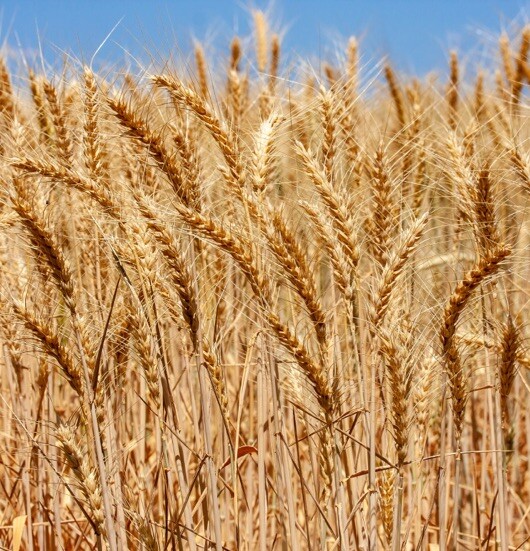The value of collecting accurate grain yield data
Collecting accurate yield data starts before harvest, so it is crucial to be prepared before the harvest rush hits.

This week’s blog has been contributed by Riverine Plains Premier Partner, IK Caldwell AGnVET
Key messages
- Yield data and mapping can help grain growers understand factors driving profitability
- Accurate, ‘clean’ yield data is essential for making good decisions post-harvest
- Being prepared before harvest is critical to collecting more accurate yield data
Farmers attempting to collect yield data over the years have had a range of different experiences – some successful and some unsuccessful!
Collecting accurate data starts before harvest, so it is crucial to be prepared before the harvest rush hits.
Why collect yield data?
Many header monitors have multiple years’ of yield data which have never been properly utilised.
Yield maps are not a new concept, and there are a range of uses for yield data. However, at the base level they are a valuable tool for reviewing the season and planning for the next. Yield maps can help understand what is driving profitability at a paddock and farm level and yield data may also have a fit for insurance, banks, family communication or other reporting.
Another reason to collect yield data is to provide an ‘entry point’ into further precision agriculture applications, such as variable rate. Yield maps fit nicely with other layers (NDVI, grid mapping) to build an understanding of yield trends or correlations in a paddock. The true value of yield data isn’t realised until multiple years of data are collected, providing information across different crops and seasons. Potential management zones can then be identified, which can be ground-truthed through strategic soil testing.
Getting yield data properly cleaned and analysed
It‘s important to properly clean yield data; simply looking at the colours on a map on the monitor does not always give you the whole picture. For example, yield differences can be exaggerated by outliers in the data, so clean data is crucial when trying to understand if there is any variation. Also, don’t be fooled by big colour differences – sometimes the yield difference can be insignificant. When looking at nutrient removal or profit maps/gross margins, it’s critical to have accurate data.
Cleaning yield maps with the appropriate software involves adjustment of key parameters which often have a level of error. This includes overlap or flow delay and when working with multiple headers (machines can be balanced to give yield data with less error).
Even if you have data from a past season that you believe wasn’t collected accurately, it can be statistically cleaned to provide a more usable map.
Combining accurate yield data with local knowledge
Realising the value of yield data also combines the knowledge that both you and your agronomist have about your farm, with the data layers provided. Working with your agronomist, yield data can be used to:
- review last season at pre-season planning meetings
- understand how last season compared to previous years
- assess results from on-farm trials
- analyse the performance of different crops or varieties
- create profitability maps – i.e. was there a return on investment on seed, chemical, fertiliser etc.
- identify high and low performing areas of a paddock and any variation.
Identifying paddock variation
If yield maps demonstrate variation, farmers can then try and understand the cause and how it can be managed. This might involve strategic soil testing or grid sampling to gain further insight. Variable rate application of soil ameliorants or nutrients could be an option, however, it’s vital to note that this requires an understanding of whether there is enough variation for variable rate to be profitable.
Consulting with your agronomist is imperative when assessing the potential for variable rate applications. Where used appropriately, it can increase the efficiency of inputs and save money. However, you must understand if variation is influencing nutrient removal and get the rates right (you don’t want to ‘rob Peter to pay Paul’).
Be prepared!
There are a range of things you can do to collect more accurate yield data, but the most important is to be prepared. Also, remember that good data in = good data out.
Before you start the header at harvest:
- read the manual (it will have specific calibration procedures)!
- talk to your local dealer and find out who can support you locally
- consider exploring dealers’ YouTube channels, which can be helpful for getting set-up for harvest
Quick checks:
- check flow sensor is clean and check wear on pads
- check moisture sensor for build-up of debris
Setting up your header monitor:
- ensure you have a data card/USB inserted in the monitor (if required)
- back up files and start harvest with a clean data card
- note that ‘GROWER/FARM/FIELD’ on the monitor is your filing system; having correct and consistent paddock names, crop types/varieties will make data collection and analysis smoother (this includes correct spelling of farms/paddocks/crops/varieties)
- ensure correct season/task, swath width and stop height
If time allows, consider downloading yield data one or two days into harvest to see whether your monitor is collecting the data (i.e. on a rainy day).
Importance of correct set-up
Your header needs to be calibrated well, so that it is picking up the differences between high yielding areas and low yielding areas. If this is proportional, software programs can adjust the map if you have weighbridge dockets or chaser-bin scale records for total tonnes.
Having good yield data to analyse after harvest begins with being prepared before harvest.
Speak to your local IK Caldwell AGnVET agronomist about yield data analysis and grid mapping today.
This article was written by Nick Grant, IK Caldwell AGnVET.
Author
NEWS
Keep up to date with the latest news from across the Riverine Plains.
-
Livestock
-
People
-
Grains
-
Sustainability

